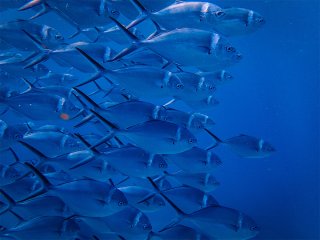

Ecosystems are communities of living things, including plants, animals, and microorganisms, that interact with each other and the physical world. 1 People depend on ecosystems for many benefits, such as food, water, clean air, building materials, and recreation. Ecosystems can be big, like the one that surrounds Yellowstone National Park, 2 or as small as a single fallen tree. They can also overlap with one another or be part of larger ecosystems. These connections between ecosystems also make them dependent on one another, and not simply dependent on the organisms within them.
Climate change affects ecosystems in many ways. Climate controls how plants grow, how animals behave, which organisms thrive, and how they all interact with the physical environment. 3,4 As habitats experience different temperatures, precipitation patterns, and other changes, the organisms that make up ecosystems feel the effects. All U.S. regions are experiencing the impacts of climate change but impacts vary by area and ecosystem. 5
Did You Know?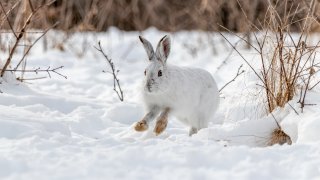
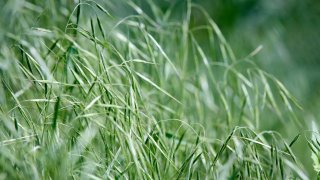
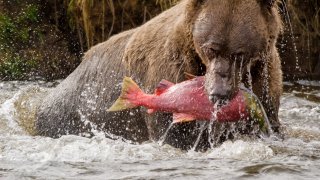
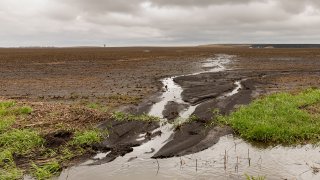

People are taking many actions to help ecosystems adapt to climate change impacts or minimize the effects. For example, federal agencies that manage the nation’s natural resources are now considering climate change in polices and planning. At the local level, many groups are preserving habitats and restoring ecosystems that have been damaged or disturbed in the past.
Explore the sections on this page to learn more about climate impacts on ecosystems:
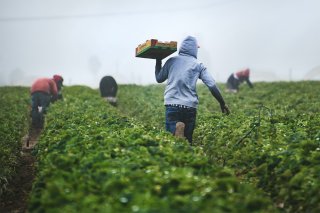
Ecosystems provide many benefits to people. These are called ecosystem services. Ecosystem services include goods from plants and animals, such as the food and wood provided by trees. They also include parts of the physical world that keep the planet safe and healthy. For example, clean lakes and streams are considered ecosystem services because we use them for drinking water and recreation.
Climate change affects ecosystems at multiple levels, from the populations that make up ecosystems to the services they provide to communities, economies, and people. Four key impacts are described in this section.
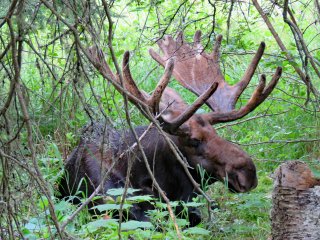
As the climate changes, some species will adapt by changing their behavior, physical characteristics, or how their bodies function. Others will not be able to adapt. As a result, climate change could lead to expansions, reductions, or extinctions of some populations. These changes, in turn, can affect the overall biodiversity of a region.
Plants and animals may also change the geographic range they inhabit in response to changing climatic conditions. Changing temperature and water conditions have already altered the ranges of many plants and animals. 6 As temperatures have warmed in the United States, some land animals have moved to the (typically cooler) north by an average of 3.8 miles per decade. 7 Some marine species have also shifted north by more than 17 miles per decade. 8
Many plants and animals rely on cues in nature, including temperature and water conditions, to trigger certain stages of their life cycles. As the climate changes, these cues can change at different rates, or potentially not all. As a result, species that depend on one another at certain times of the year may no longer be in sync.
For example, plankton are an important food source for young fish, but they tend to react more quickly to changes in temperature than the fish. This means the plankton might not be as available when growing fish need it most. Also, if a bird migrates at the same time each year, it could reach its destination to find that, due to shifting temperatures, its main food source grew too early and is no longer available. 10
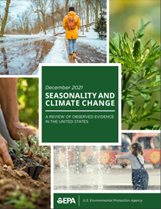
Climate change is also changing the way species and populations interact with the environment and one another. These impacts can be felt throughout an entire ecosystem.
For example, climate change is increasing the spread of invasive species in some areas. 11 An invasive species is one that is not native to an area. Invasive species can outcompete native plants and animals, bring in new diseases, and cause other problems. These changes can create significant environmental and economic harm.
As ocean water warms, invasive fish species, such as the tropical lionfish, are expected to move north along the Atlantic coast, threatening native species. 12 This can also hurt humans, as lionfish are venomous and can sting people.
Climate change can also affect food webs. A food web is the whole set of feeding relationships among different organisms in an ecosystem. At the bottom of a food web are organisms like plants and plankton. Other animals, higher in the web, rely on them as food sources. Climate impacts on any part of a food web can affect the whole system, and even other ecosystems altogether. From the example above, if young fish cannot find enough food in the estuaries, their predators in the ocean could feel the effects as well.
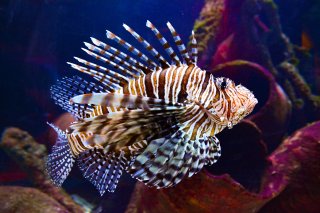
Climate change is affecting some of the critical services that ecosystems provide to society. 13 For example, ecosystems provide a bounty of food to people. Climate changes, like drought and heat, could affect the availability and quality of some foods, as well as farmers’ ability to grow certain crops. 14
Climate change can also affect ecosystem services such as carbon capture and storage. Forest ecosystems play a critical role in the carbon cycle, helping to absorb carbon dioxide from the atmosphere and store it in roots, soil, and the forest floor. 15 But climate-driven increases in wildfires, flooding, pests, and diseases can limit the ability of an ecosystem to provide this important service. 16
For more specific examples of climate change impacts in your region, please see the National Climate Assessment.
Ecosystems and their benefits—often referred to as ecosystem services—support key aspects of human existence. As a result, they are the foundation to large parts of the economy. Globally, ecosystem services are worth an estimated $125 to $145 trillion per year. 17
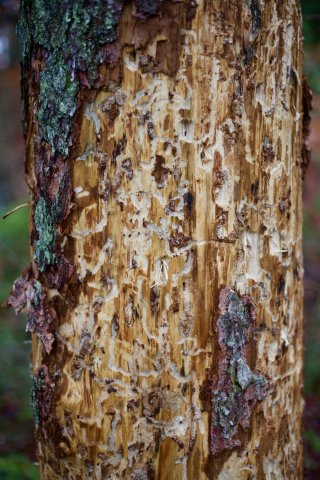
Climate change impacts affect the livelihoods of millions of Americans, including fishers, loggers, ranchers, and farmers. For example, the stress caused by rising water temperatures and ocean acidification could cost the shellfish industry hundreds of millions of dollars.18 Shifting ranges for certain fish mean that fishers may need to travel farther to catch them or purchase new equipment to reach those areas. 19 These shifts are projected to result in losses of hundreds of millions of dollars each year by the year 2100. 20 U.S. agriculture will also experience economic impacts, though they could be both negative and positive. Climate change threatens to bring increased droughts, pests, and extreme weather events, which would take an economic toll. 21 However, earlier springs and milder winter weather can prolong growing seasons in many regions, increasing crop yields and revenues. 22
Climate change also affects the tourism and recreation industries. Harmful algal blooms already cost the country nearly $1 billion each year from the loss of recreational fishing and boating revenue. 24 Damage to coral reefs due to climate change is projected to result in $140 billion in total lost revenues to the U.S. recreation industry by 2100. 25 Communities that depend on tourism will feel these economic impacts the most.

Some communities depend on ecosystems and their services more than others, including some Indigenous and rural communities. As ecosystems change, some groups also may be able to adapt better than others due to geographic, social, or economic factors.
Indigenous communities have a unique relationship with the environment. Climate change impacts on ecosystems can harm Indigenous peoples’ ability to preserve and sustain their cultural heritage. 26,27 Shifting animal ranges can disrupt Indigenous peoples’ ability to hunt and fish as the animals move beyond their tribal lands. 28
Many rural communities depend on ecosystem-related livelihoods, including farming, fishing, and raising livestock. People in these areas are more likely to see economic impacts when faced with ecosystem challenges, such as invasive species and decreased soil quality. 29
We can limit climate change’s impacts on ecosystems in several ways, including the following:
Learn more about some of the key indicators of climate change related to this sector from EPA’s Climate Change Indicators in the United States:
1 Lipton, D., et al. (2018). Ch. 7: Ecosystems, ecosystem services, and biodiversity. In: Impacts, risks, and adaptation in the United States: Fourth national climate assessment, volume II. U.S. Global Change Research Program, Washington, DC, p. 270.
2 U.S. Department of the Interior, National Park Service. (2022). Greater Yellowstone ecosystem. Retrieved 01/29/2022.
3 Lipton, D., et al. (2018). Ch. 7: Ecosystems, ecosystem services, and biodiversity. In: Impacts, risks, and adaptation in the United States: Fourth national climate assessment, volume II. U.S. Global Change Research Program, Washington, DC, p. 276.
4 Lipton, D., et al. (2018). Ch. 7: Ecosystems, ecosystem services, and biodiversity. In: Impacts, risks, and adaptation in the United States: Fourth national climate assessment, volume II. U.S. Global Change Research Program, Washington, DC, p. 273.
5 Lipton, D., et al. (2018). Ch. 7: Ecosystems, ecosystem services, and biodiversity. In: Impacts, risks, and adaptation in the United States: Fourth national climate assessment, volume II. U.S. Global Change Research Program, Washington, DC, p. 279.
6 Lipton, D., et al. (2018). Ch. 7: Ecosystems, ecosystem services, and biodiversity. In: Impacts, risks, and adaptation in the United States: Fourth national climate assessment, volume II. U.S. Global Change Research Program, Washington, DC, p. 291.
7 Lipton, D., et al. (2018). Ch. 7: Ecosystems, ecosystem services, and biodiversity. In: Impacts, risks, and adaptation in the United States: Fourth national climate assessment, volume II. U.S. Global Change Research Program, Washington, DC, p. 281.
8 Lipton, D., et al. (2018). Ch. 7: Ecosystems, ecosystem services, and biodiversity. In: Impacts, risks, and adaptation in the United States: Fourth national climate assessment, volume II. U.S. Global Change Research Program, Washington, DC, p. 281.
9 Lipton, D., et al. (2018). Ch. 7: Ecosystems, ecosystem services, and biodiversity. In: Impacts, risks, and adaptation in the United States: Fourth national climate assessment, volume II. U.S. Global Change Research Program, Washington, DC, p. 291.
10 Lipton, D., et al. (2018). Ch. 7: Ecosystems, ecosystem services, and biodiversity. In: Impacts, risks, and adaptation in the United States: Fourth national climate assessment, volume II. U.S. Global Change Research Program, Washington, DC, p. 283.
11 Lipton, D., et al. (2018). Ch. 7: Ecosystems, ecosystem services, and biodiversity. In: Impacts, risks, and adaptation in the United States: Fourth national climate assessment, volume II. U.S. Global Change Research Program, Washington, DC, p. 282.
12 Lipton, D., et al. (2018). Ch. 7: Ecosystems, ecosystem services, and biodiversity. In: Impacts, risks, and adaptation in the United States: Fourth national climate assessment, volume II. U.S. Global Change Research Program, Washington, DC, p. 278.
13 Lipton, D., et al. (2018). Ch. 7: Ecosystems, ecosystem services, and biodiversity. In: Impacts, risks, and adaptation in the United States: Fourth national climate assessment, volume II. U.S. Global Change Research Program, Washington, DC, p. 284.
14 Lipton, D., et al. (2018). Ch. 7: Ecosystems, ecosystem services, and biodiversity. In: Impacts, risks, and adaptation in the United States: Fourth national climate assessment, volume II. U.S. Global Change Research Program, Washington, DC, p. 284.
15 Vose, J.M., et al. (2018). Ch. 6: Forests. In: Impacts, risks, and adaptation in the United States: Fourth national climate assessment, volume II. U.S. Global Change Research Program, Washington, DC, p. 244.
16 Vose, J.M., et al. (2018). Ch. 6: Forests. In: Impacts, risks, and adaptation in the United States: Fourth national climate assessment, volume II. U.S. Global Change Research Program, Washington, DC, p. 244.
17 U.S. Climate Resilience Toolkit. (2021). Ecosystems. Retrieved 03/18/2022.
18 Lipton, D., et al. (2018). Ch. 7: Ecosystems, ecosystem services, and biodiversity. In: Impacts, risks, and adaptation in the United States: Fourth national climate assessment, volume II. U.S. Global Change Research Program, Washington, DC, p. 284.
19 Lipton, D., et al. (2018). Ch. 7: Ecosystems, ecosystem services, and biodiversity. In: Impacts, risks, and adaptation in the United States: Fourth national climate assessment, volume II. U.S. Global Change Research Program, Washington, DC, p. 278.
21 Vose, J.M., et al. (2018). Ch. 6: Forests. In: Impacts, risks, and adaptation in the United States: Fourth national climate assessment, volume II. U.S. Global Change Research Program, Washington, DC, p. 234.
23 Lipton, D., et al. (2018). Ch. 7: Ecosystems, ecosystem services, and biodiversity. In: Impacts, risks, and adaptation in the United States: Fourth national climate assessment, volume II. U.S. Global Change Research Program, Washington, DC, p. 270.
25 EPA. (2017). Ch. 23: Coral reefs. In: Multi-model framework for quantitative sectoral impacts analysis: A technical report for the fourth national climate assessment. Washington, DC, p. 173.
26 Jantarasami, L.C., et al. (2018). Ch. 15: Tribes and Indigenous peoples. In: Impacts, risks, and adaptation in the United States: Fourth national climate assessment, volume II. U.S. Global Change Research Program, Washington, DC, p. 582.
27 Jantarasami, L.C., et al. (2018). Ch. 15: Tribes and Indigenous peoples. In: Impacts, risks, and adaptation in the United States: Fourth national climate assessment, volume II. U.S. Global Change Research Program, Washington, DC, p. 583.
28 Jantarasami, L.C., et al. (2018). Ch. 15: Tribes and Indigenous peoples. In: Impacts, risks, and adaptation in the United States: Fourth national climate assessment, volume II. U.S. Global Change Research Program, Washington, DC, p. 584.
29 Lipton, D., et al. (2018). Ch. 7: Ecosystems, ecosystem services, and biodiversity. In: Impacts, risks, and adaptation in the United States: Fourth national climate assessment, volume II. U.S. Global Change Research Program, Washington, DC, p. 278.
30 Lipton, D., et al. (2018). Ch. 7: Ecosystems, ecosystem services, and biodiversity. In: Impacts, risks, and adaptation in the United States: Fourth national climate assessment, volume II. U.S. Global Change Research Program, Washington, DC, p. 277.
31 Carlson, S.M. (2017). Synchronous timing of food sources triggers bears to switch from salmon to berries. Proceedings of the National Academy of Sciences of the United States of America, 114(39): 10309–10311.
32 Lipton, D., et al. (2018). Ch. 7: Ecosystems, ecosystem services, and biodiversity. In: Impacts, risks, and adaptation in the United States: Fourth national climate assessment, volume II. U.S. Global Change Research Program, Washington, DC, p. 284.